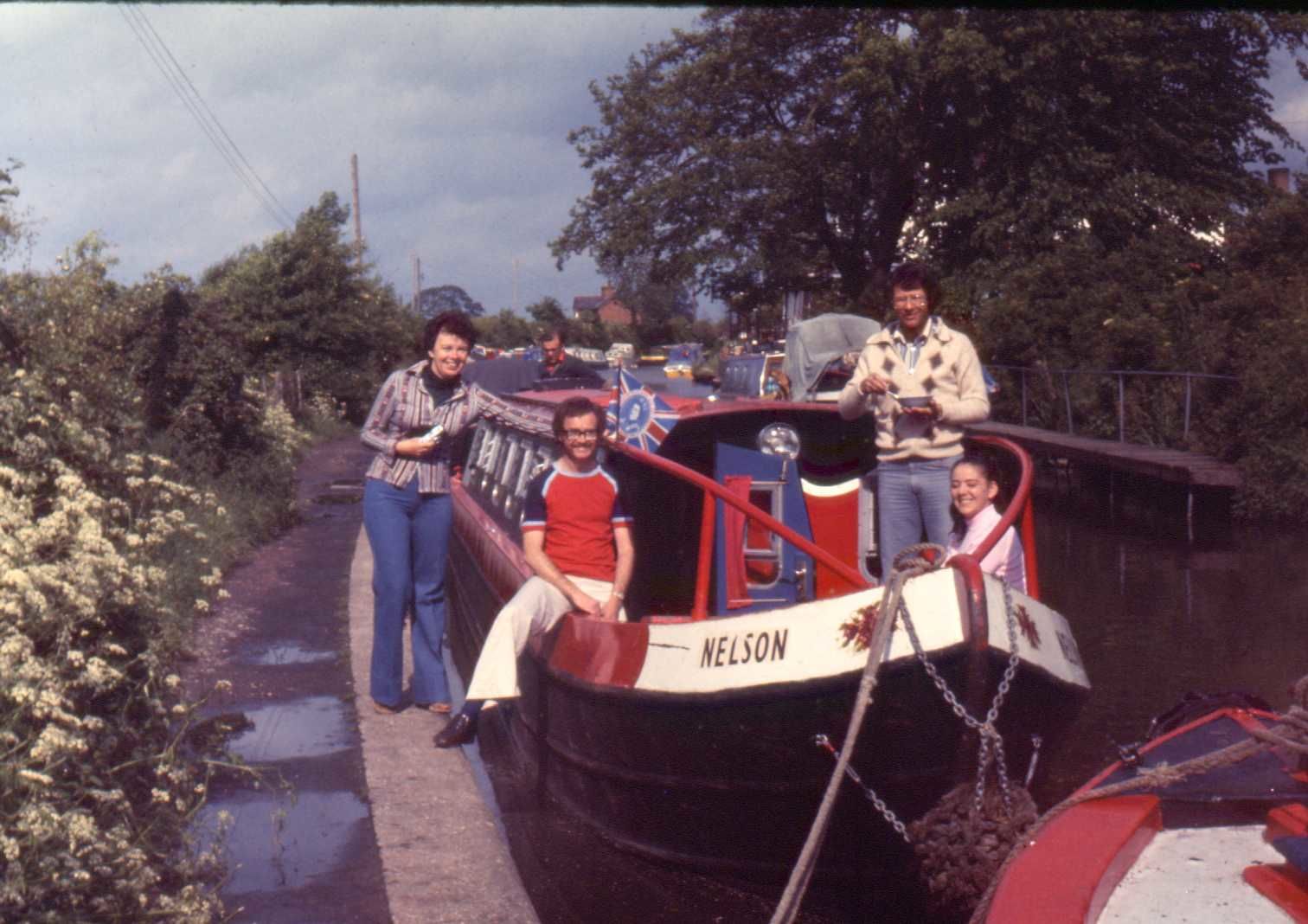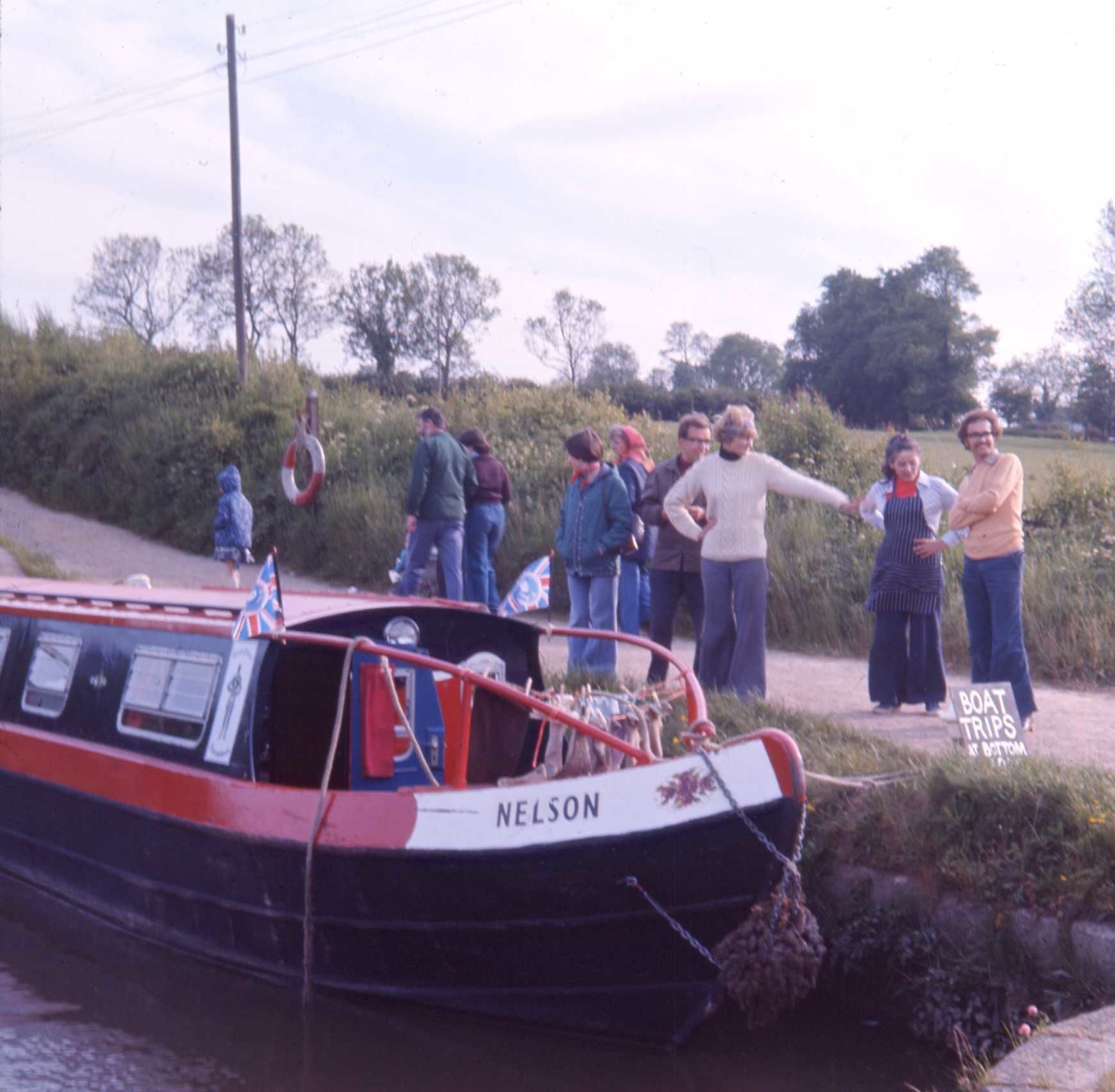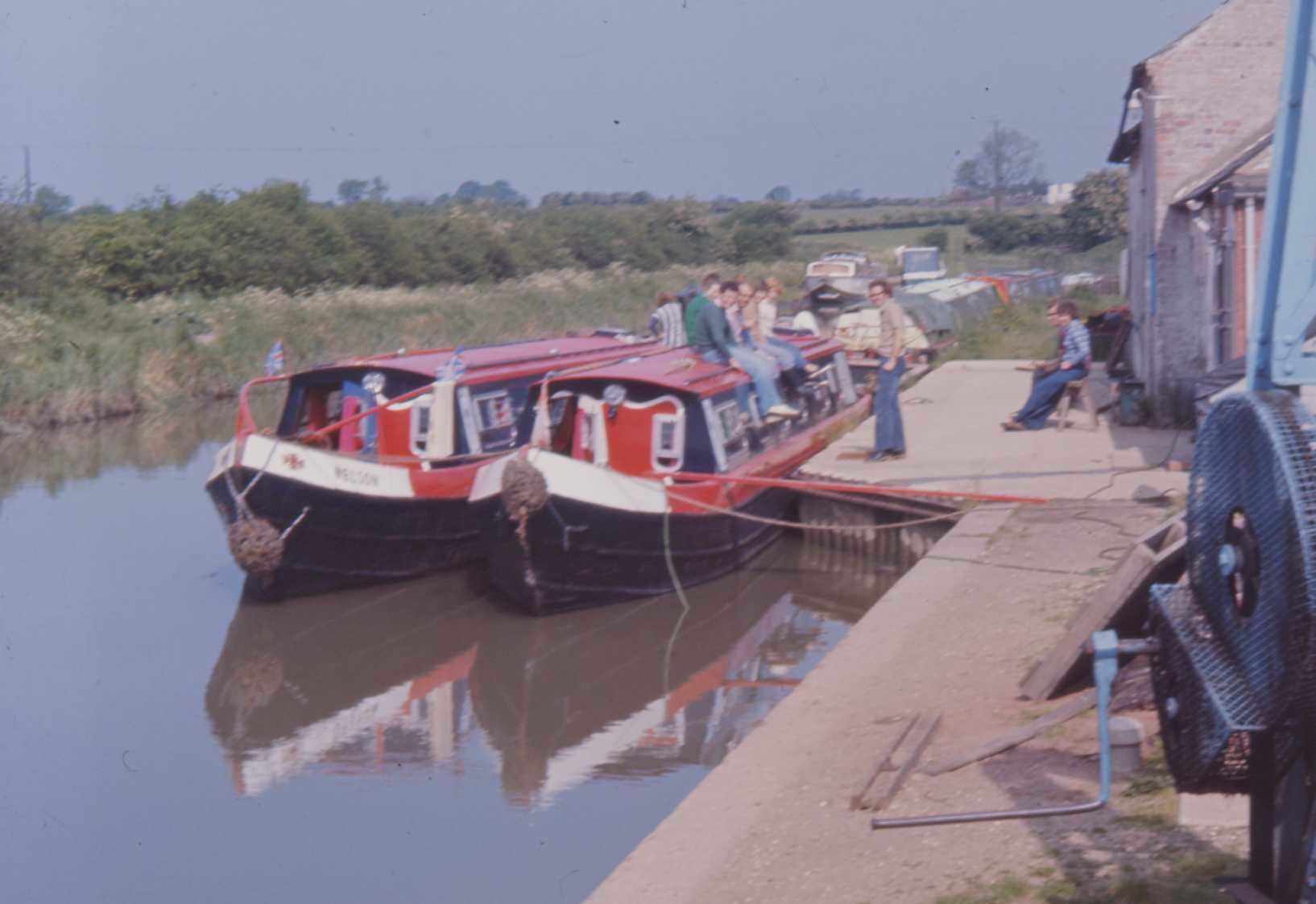

Ronaldo47
-
Posts
1,362 -
Joined
-
Last visited
Content Type
Profiles
Forums
Events
Gallery
Blogs
Store
Posts posted by Ronaldo47
-
-
Something that needs to be borne in mind when considering old photos is that the use of panchromatic black and white film did not become universal until the mid-1950's. In Victorian times, film was only sensitive to blue, so people's lips were black, and the leaves and trumpet of a daffodil in a dark blue bowl would look black and the blue bowl would be white. By around 1900, orthochromatic films sensitive to blue and green, and panchromatic films sensitive to all colours had became available, but the high cost of the pan films meant that ortho was the usual choice in the first half of the 20th century. An ortho film will render the daffodil and vase in approximately correct tones, but will still give people black lips. Kodak's popular "Verichrome" roll film was ortho until the mid-1950's, when it was replaced by "Verichrome Pan".
In the late 1980's I was experimenting taking photos of model trains to make them look like the real thing. I have an old camera that takes sheet film, and was able to buy a box of Ilford Ortho sheet film to experiment with. These days I would shoot in colour in digital, and then use an image editing program to remove the red content for pre-war ortho, and remove red and green for Victorian, simulations before converting to monochrome.
-
On 21/07/2020 at 14:09, Athy said:
Interesting - but surely Ilford (and possibly other firms) were making roll films and plates in the U.K. by that time.
There would have been no problem with making plates, the problem was the non-availability of plastic film base, both the nitrate used for 35mm cine prints, and the safety film for cine camera film, roll films, the 4" x 5" sheet films then widely used by press photographers, and the large format sheet films used in aerial reconnaisance cameras. Film base was simply not being manufactured in the UK.
The rather lengthy document at the following link lists all the stuff supplied to the UK under lend-lease. It includes miles of film and film base (as well as thousands of pigeons!).
-
 1
1
-
-
A relative who works for Ford, tells me that most electric cars seem to have been bought as second cars, used for short journeys, rather as replacements for the main vehicle. Certainly all the accounts of actual long distance trips that have appeared in the motoring press in the past couple of months have not been calculated to encourage changing to pure electric, quite the opposite!
While there are now automotive batteries that can be charged rapidly, you can only make two consecutive rapid charges without irreversibly damaging the battery. Ford have just released a video of their electric Mustang. To facilitate rapid charge, the battery has had to be provided with a refrigeration unit to keep the temperature down, another thing that reduces the effective charging efficiency. My own understanding of battery technology, wearing my hat as a retired former professional electrical engineer, is that there is normally a trade- off between rate of charge and charging efficiency, meaning that the faster the charge, the lower the proportion of energy put in that can be taken out again. Likewise, local battery storage to top up the grid will always involve some loss of energy due to the double conversion. However, the main problem with the grid seems to be that the increasing proportion of electricity from renewable sources is affecting the frequency stability of the grid. You used to be able to rely on a synchronous-motored mains electric clock to show the correct time to within a few seconds: these days mine can vary by at least 30 seconds either way relative to the Greenwich time pips of Radio 4 FM. With the possibly sole exception of hydro-electricity, renewable sources either generate power at DC (solar), or at a non-synchronous frequency (wind). The grid has traditionally relied on the mechanical inertia of massive rotating generators to act as an electrical flywheel to keep the grid frequency stable: the electronic DC-AC and AC -DC- AC convertors used to convert solar and wind power to 50Hz, rely on the grid as the reference frequency for their final AC conversion stages. There was a massive blackout a few months ago when one large renewable source tripped, causing several other renewable generators to trip because the remaining conventional generators were unable to maintain the frequency within the specified limits. As far as I know, a solution to this problem, which has been known about for many years, is still awaited.
I don't own a boat myself, but have taken canal holidays on average every other year since 1976. To me, one of the joys of canal holidays has been the ability to moor up at remote locations, enjoying the peace and quiet of the countryside, and watching the sun go down over the fields. The idea of having a network of charging stations at marinas and the like would be akin to hiring a camper van for a touring holiday and having to spend each night at a motorway service area.
-
 3
3
-
-
The spectacular caves of Drach in Majorca have a fairly extensive underground lake at the exit, where your visit ends with music, accompanied by the appearance of a boat containing a singer. When we were there more than a decade ago, after the performance it was announced in Spanish, German, and French, that you could either exit on foot via the passage, or by boat. The English announcement only mentioned exit on foot! Along with the Spanish, German and French visitors, we took our place in the queue for the boats, which were electrically-powered and virtually silent. Drach is on the coast, and the crystal-clear water was saline.
-
Clicking the original link now produces the survey map of a proposed canal from Bishops Stortford to Cambridge!
-
Thanks very much for the link, a very interesting collection. The one of the lady straddling the two partly-open lock gates would give modern H&S a fit! I suppose the photographer, presumably American, would have brought his own supplies of film and not have been subject to wartime rationing: my parents told me that wedding photographers were only allowed to take three photos. I understand that the UK used to get all its pre-war supplies of film base from Gevaert, and after the fall of Europe it took time to get fresh supplies from the US under lease-lend.
-
 1
1
-
-
The only potentially serious incident I have experienced was on my first canal holiday in 1976, when a group of us hired the entire original Black Prince fleet of two boats (Nelson and Rodney) for a week. I was on Nelson and we were turning the boat around at Braunston somewhere between bridge 91 and Braunston turn where the canal was plenty wide enough for our 60' boat. Just as we were at 90° to the bank, from the Napton junction direction the prow of a boat came through the bridge with a breaking bow wave. It was an ex-working boat plus butty camping boat combination and despite us sounding the horn, he clealy didn't see us until the steerer was through the bridge. We did our best to turn, but all we could do was call down to those inside to hang on as we were about to be rammed, and he struck us in the middle. Fortunately he had managed to slow down somewhat, but it did make a bang, and no damage was done. The skipper of the other boat gave us some lip about being bad drivers. Our understanding was that you should always check the canal abead when going round bends or passing through bridges, so I guess it was just bluster on his part. The ironic thing was that, due to Ben Hur having recently been on TV, we had been making comments like "ramming speed" all week!
I had a brush with French maritime bureaucracy some 10 years ago when helping my wife to deal with the estate of her late brother, a brit who had been resident in France for over 30 years: we were the only family members that knew any french. On retirement he had bought an "Old Gaffer" and had it shipped from the USA to France. As it was a new importation into the EC, it would have had to comply with the then-current EC regulations regarding bouyancy etc. to allow it to be registered with the French authorities, unless he could show it was built to a traditional design. Fortunately he had been able to do this, and so the Bureau Veritas in Paris were able to issue him with the necessary certificate. This restricted use to within 3 nautical miles of the coast, and during daylight hours only. We found a buyer, and when I was sorting out the documents for the notaire to complete the sale, noticed that registration was conditional on the boat not being sold on within 5 years: earlier sale would have required the boat to comply with the current regulations, which was simply not possible for an Old Gaffer. Fortunately the 5 year deadline only had a few weeks to go, so the sale could be delayed until after the deadline. I know that some people have found the french offhand, but our notaire and the other french people we dealt with, were extemely helpful.
-
 1
1
-
-
The link to the photos is broken.
-
It's several decades since I locked through between the basin and the Avon. This was shortly after the basin had had a spruce-up. Not only were there no mooring rings, necessitating driving spikes into the gravel, but the circular ridges of brick that had originally provided a positive grip for your feet when operating the lock gates, while visible, had been embedded in cement, presenting a completely smooth surface with little grip. No doubt done to avoid tripping the tourists, but hard work for boaters.
-
I recall seeing the Anglo-Welsh electric boats in their catalogue but the need to stop (overnight) for a recharge at particular locations, which would have severely limited the cruising options, was a definite no-no. I would think that this issue would still limit the uptake of electric boats.
-
I did once see a working model of a canal lock to about the same scale at a model railway exhibition a decade or so ago, made by a husband and wife team who normally made railway models. The only working aspect was that the water in the lock chamber, which contained a floating barge, rose and fell. While it was an excellent model, the windlasses, on the ground next to the lock beams, were at the wrong end of the lock, being adjacent the stern of the barge, not the prow. Perhaps they had never worked a boat through a lock themselves, or had put the model barge in the lock the wrong way round.
-
This is very briefly mentioned in the book "The Bassett-Lowke Story" by Rowland Fuller, New Cavendish Books, 1984. No photos, only an entry for the year 1934 in Appendix III , Principal Exhibition Class Ships, which says
" GRAND UNION CANAL Scale 1:48 Working model of a short section with locks Grand Union Canal Co. "
This seems to have been the only canal-related model they made. However, Bassett- Lowke made many scale models, both static and working, for shipping companies, and during WWII made instructional scale models for the armed forces, including miniature Bailey Bridge kits and Mulberry Harbours for training Royal Engineers and others.
-
Glass plates for cameras and for making lantern slides were still available in the late 1960's. A school friend who became a chemist working at a CEGB power station, took me round it one Saturday. The chemistry lab had a darkroom and the official cameras, and his boss, who happened to be in and knew that I had an old plate camera with a sheet film adaptor, gave me a box of Ilford FP4 glass plates, another of FP3 sheet film, (both still in date) and a box of 2" x 2" Kodak glass lantern slide plates.
-
Copying my 1970's boating cine fims onto video is at present on the "round tuit" pile, but my long term intention is to put them on youtube.
-
When I bought my first house over 40 years ago, I went through most of the books on building practice in my local public library. They all said that the eminently hydralic lime that had formerly seen extensive use, was no longer commercially available: all the economically- workable deposits had been exhausted, leaving only semi-hydraulic and non-hydraulic limes. For hydraulic mortar you had to use portland cement, or a portland plus lime mixture.
-
 1
1
-
-
I was on a canal holiday during the Queen's silver jubilee week of 1977. We were with Black Prince (then in their second year of operation with a fleet of four boats), had started from their temporary base at Braunston, and our mid-week turnround point was somewhere north of Thurmaston on the Soar. We noticed the intensive barge traffic at the gravel workings, and from memory a mixture of broad beam and narrow beam barges. I didn't take many still photos on that stretch as I was concentrating on 8mm cine. I got some cine shots of the barges being loaded, and some of a barge plus butty that we passed going the other way. It is some years since I last projected the film, but either the butty or the motor was being steered by a woman with a very contented-looking toddler strapped in a chair sitting on the cabin roof in front of her. I did wonder why my Nicholsons guide didn't mention this traffic. From this thread it must have only started after the guide had gone to press.
-
It was sad to find that the original Black Prince Owners' Club web site is no more and that the wayback archive version is incomplete. I had contributed some photos of the original Black Prince livery (black and red) taken in 1977 which did not make it. As I have been unable to find any other photos of the original livery on the web, I thought it might be of interest to post them here. I was in fact a member of a party of 14 who, in 1976, hired the entire original fleet of two boats (Nelson and Rodney) from the original Cosgrove base. Because my still camera was broken, I only recorded that trip (to Fenny Compton) in 8mm cine. Due to the closure of Blisworth tunnel, the 1977 trip (to north of Leicester) was from a temporary base at Braunston. In 1977 he had expanded to four boats, so that year we only hired half the fleet! I don't recall the name of the second boat, but it wasn't Rodney.
For the 1976 trip, the owner suggested that we might like to try lashing both boats together side by side when locking through the 14' locks. We only did so at the Braunston locks (with only one boat under power), and it certainly speeded up lock entry and departure. Conditions of hire prohibit such an activity these days.
-
 1
1
-




WWII fireboat livery colours?
in History & Heritage
Posted · Edited by Ronaldo47
When I first got interested in photography, circa 1960, I read all the books on the subject in my school and local public libraries. Most had been published in the early 1950's, probably as revisions of pre-war editions, and pretty well all started with a discussion of the different types of film. I vividly remember one in the school library that had a frontispiece with four identical views of a flower and fruit arrangement which included the aforementioned bowl of daffodils and some red apples and tomatoes. One was on colour, one in "Ordinary" film, one in Ortho, and one in Pan. It really brought home the differences in colour rendering of the different film types. Probably of practical use at the time, as I understand that many keen amateurs were still using plate cameras (for which sheet film adaptors were readily available) in the immediate post-war period when both Ordinary and Ortho sheet films and plates were still readily available.
These days, few people seem to be aware of the different properties of the old black and white films, which is why I thought it might be useful to mention it.